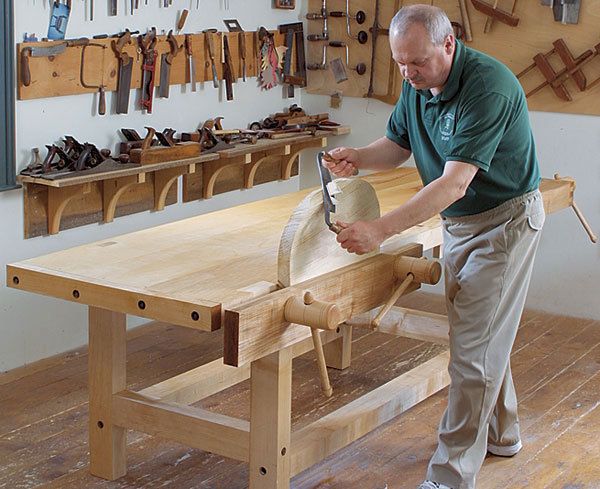A Short History of Workbenches

A workbench is essentially a table fitted with various holding devices, such as benchstops and vises, made sufficiently strong and massive to be used for a variety of woodworking operations. The modern workbench derives from two separate pieces: a table for planing wood and a bench for supporting wood to be sawn.
Designs have changed over the centuries, beginning with low Roman planing benches and slowly growing in height to present day hand-high benches, and acquiring different accessories. French benches of the 17th and 18th centuries, for example, depended largely on stops and dogs to hold the workpiece, whereas British and American benches relied more on various vises (which first appeared on medieval German benches). How and where vises are fitted further differentiates between different bench types, the most common of which are those known as the standard cabinetmaker’s bench (fitted with a face vise and a tail vise), and the Scandinavian bench (characterized by a dog-leg face vise that imposes no limits on the size of the workpieces that may be held in it.
Graham Blackburn is a furniture maker, author, and illustrator, and publisher of Blackburn Books (www.blackburnbooks.com) in Bearsville, N.Y.





















Log in or create an account to post a comment.
Sign up Log in